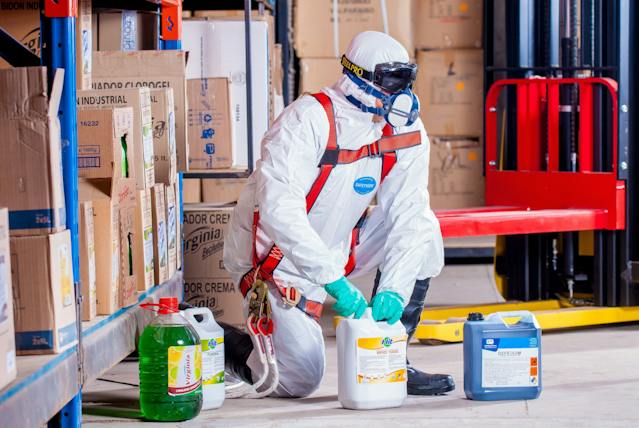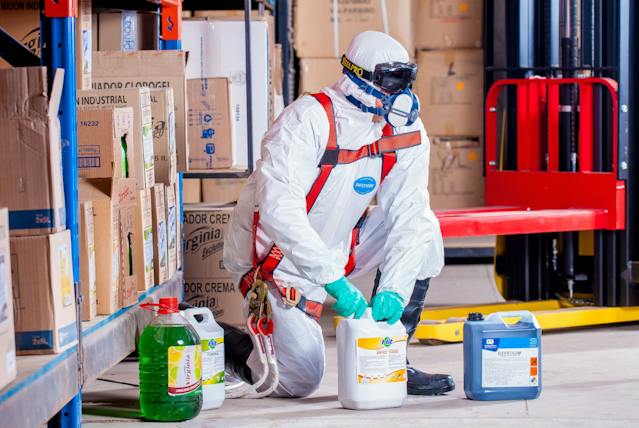In an ever-evolving world, where industries are constantly growing and expanding, workplace safety remains a paramount concern. The Occupational Safety and Health Administration (OSHA) plays a central role in regulating and enforcing safety standards in construction and general industry. This article discusses OSHA standards for the construction industry, their importance, and how they ensure the safety and well-being of workers.
What is OSHA?
OSHA, the Occupational Safety and Health Administration, is a federal agency under the U.S. Department of Labor. It was founded in 1970 with one main mission: to ensure safe and healthy working conditions for workers in various industries. OSHA accomplishes this mission through the development and enforcement of workplace safety standards, awareness programs, and training initiatives.
OSHA's mission
OSHA's main tasks are:
- Establish and enforce safety and health standards.
- Providing training, outreach, education and support.
- Carry out inspections to identify and eliminate risks in the workplace.
OSHA Standards for Construction
The construction industry is known for its dynamism and diversity of tasks. OSHA recognizes these challenges and has implemented specific standards to address them. These standards cover several aspects, including fall protection, electrical safety, and hazard communication.
Important OSHA Regulations for the Construction Industry
Important OSHA standards for the construction industry include:
- Fall Protection (29 CFR 1926.501)
- Scaffolding (29 CFR 1926.451)
- Excavation and Excavation Works (29 CFR 1926.650)
- Electrical Wiring Methods (29 CFR 1926.405)
- Hazard Communication (29 CFR 1926.59)


OSHA Standards for General Industry
The general industry encompasses a wide range of sectors, including manufacturing, healthcare and warehousing. OSHA has developed custom standards to ensure the safety and well-being of employees in these diverse work environments.
OSHA's key standards for general industry include:
- Hazard Communication (29 CFR 1910.1200)
- Machinery Protection (29 CFR 1910.212)
- Respiratory protection (29 CFR 1910.134)
- Hazardous Energy Control (Lockout/Tagout) (29 CFR 1910.147)
- Personal protective equipment (PPE) (29 CFR 1910.132)
While construction and the industry in general face their own challenges, there are commonalities that run through all OSHA standards. These common principles include the importance of adequate training, identifying hazards and using personal protective equipment.
OSHA enforcement
Inspection process
OSHA conducts inspections to ensure employers comply with safety regulations. These inspections can be scheduled, scheduled, or performed in response to a complaint or accident. During inspections, OSHA inspectors examine the workplace, review records, and interview employees to identify potential hazards.
Penalties for non-compliance
Failure to comply with OSHA standards can result in severe penalties for employers, including fines and possible legal action. The severity of the penalties depends on the severity of the violations and the employer's history of noncompliance.
OSHA Training Requirements
Importance of training
Training is the foundation of OSHA's approach to workplace safety. Well-trained employees are better able to identify hazards, use safety equipment, and respond effectively to emergencies.
Training Guidelines
OSHA establishes specific training requirements for different industries. Employers must train their employees on topics relevant to their job roles and ensure that employees have the knowledge and skills necessary to work safely.
Employees have the right to a safe workplace free from known hazards. They can request an OSHA inspection if they believe their workplace is unsafe, and they can serve on safety and health committees.
Employees also play an important role in workplace safety. You must comply with all safety regulations, report hazards and properly use the safety equipment provided.
Employers have a responsibility to create and maintain a safe work environment. This includes providing training, implementing safety programs, and ensuring employees have access to necessary safety equipment.
In the world of industry and construction, safety is non-negotiable. OSHA's tireless commitment to establishing and enforcing safety standards has had a lasting impact on workplace safety.
By understanding OSHA standards and promoting a culture of safety, both employers and employees can contribute to a safer work environment.

